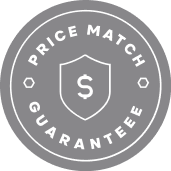Recommended Nutsert Installation Tools
Rivet Nuts AVK - Aluminium - Knurled Body - Open End
Brands you know and trust - AVK
AVK aluminium rivet nuts. Made in the USA.
Aluminium blind rivet nuts have an internal thread that can be installed into a panel, tube or other structure from the front side without need to see or access the backside, or "blind" side to complete the installtion. Once installed they remain captive to which a mating component can be attached using standard fastener.
Made in the USA, these cold forged high precision rivet nuts are great for numerous applications. Ideal for punched or drilled holes they can be installed using a manual, air or cordless tool, either before or after finish coat is applied.
Rivet Nut - AVK®.
An AVK® rivet nut, also known as a rivnut or nutsert is a type of fastener used to create a threaded hole in materials that are thin or where access to the backside is limited. It is commonly used when joining metal sheets or other materials that are too thin to support a tapped thread.
A rivet nut consists of a cylindrical body with a threaded interior and a flange at one end. The exterior of the body may have ridges or knurls to provide better grip and prevent rotation. The other end of the rivet nut is open to allow access for installation.
Rivet Nut - How to Install Lab.
To install a rivet nut, a hole is drilled or punched into the material. The plus nut is then inserted into the hole, and a tool is used to deform or compress the flange end. This process causes the plus nut to expand and grip the material securely. The threaded interior of the plus nut provides a reliable and durable anchor point for bolts, screws, or other fasteners.
Rivet Nuts are commonly used in industries such as automotive, aerospace, electronics, and manufacturing, where they provide a versatile and efficient method for adding threaded connections to thin or inaccessible materials.
Rivet Nut - AVK®.
An AVK® rivet nut, also known as a rivnut or nutsert is a type of fastener used to create a threaded hole in materials that are thin or where access to the backside is limited. It is commonly used when joining metal sheets or other materials that are too thin to support a tapped thread.
A rivet nut consists of a cylindrical body with a threaded interior and a flange at one end. The exterior of the body may have ridges or knurls to provide better grip and prevent rotation. The other end of the rivet nut is open to allow access for installation.
Rivet Nut - How to Install Lab.
To install a rivet nut, a hole is drilled or punched into the material. The plus nut is then inserted into the hole, and a tool is used to deform or compress the flange end. This process causes the plus nut to expand and grip the material securely. The threaded interior of the plus nut provides a reliable and durable anchor point for bolts, screws, or other fasteners.
Rivet Nuts are commonly used in industries such as automotive, aerospace, electronics, and manufacturing, where they provide a versatile and efficient method for adding threaded connections to thin or inaccessible materials.
Rivet Nuts AVK - Aluminium - Knurled Body - Open End
54 From $29.70 Incl. GST(50 PCS)






